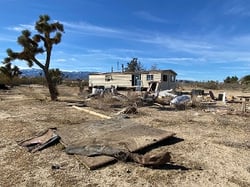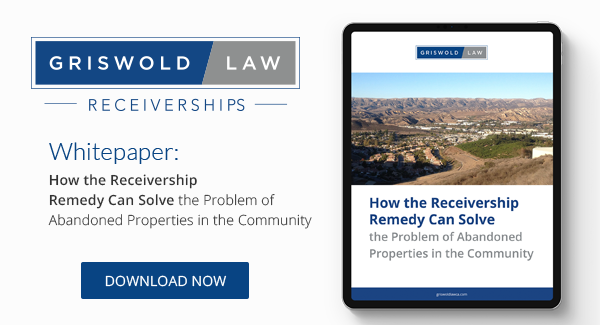Regardless of how much you wish it could be true, there is no single solution to eliminate blight. Without a “magic potion” to  resolve blight issues, many communities turn to the variety of strategies and tools that are available to them. By combining these resources, local civic leaders can craft a solution that meets their unique needs.
resolve blight issues, many communities turn to the variety of strategies and tools that are available to them. By combining these resources, local civic leaders can craft a solution that meets their unique needs.
There have been so many studies, case examples, and conversations about reducing blight and its after-effects. Community development and planning professionals have spent countless hours solving these problems in their communities.
Over the last twenty years, this collaborative effort has led to a plethora of approaches to reducing and addressing blight. Many communities have come up with incredibly creative solutions!
For example, one strategy that is growing in popularity is the idea of county land banks. A land bank can be created by a local government to acquire properties that are either vacant, dangerous, or tax-delinquent. Then, the same government body can maintain the property and prevent it from becoming a health and safety risk.
Another positive step that many communities have undertaken is the review and update of their respective property maintenance and nuisance properties ordinance.
Unfortunately, some solutions were predicated on uncontrollable factors or unrealistic scenarios. Few could have predicted a pandemic that would cause economic hardships for so many communities.
In addition to uncontrollable factors like the pandemic, many local governments could not fully finance the resources and tools defined in a well-thought-out plan. When resources are limited, code enforcement cannot adequately implement the requisite “on the ground” components of a blight management plan.
Even for communities with adequate resources, there are still challenges that exist. Therefore, communities facing these challenges find themselves searching for effective alternatives to reducing blight.
Thinking Outside the Box
The largest shift in the last two years has been community leaders extending their research, consulting non-traditional partnerships, and leveraging private sector expertise. One great example of this is the city of Memphis, Tennessee.
For many years, Memphis has utilized law students from the University of Memphis to file blight and nuisance lawsuits.
Another great example of reaching beyond community politics and into the private sector is the State of California. California has long utilized the public-private strategy of receiverships. And now communities in Kentucky are investigating how best to implement the solution and achieve similar results to California.
VPR Programs
One tool that continues to gain significant traction is the implementation of a Vacant and/or Foreclosed Property Registry program (VPR), which is implemented with help and guidance from the private sector. This collaboration alleviates significant time-consuming functions, thereby enabling local code enforcement to execute other initiatives.
For communities contemplating a registry or for those already utilizing one, it is important to set realistic expectations.
Whether administered in-house or outsourced, a VPR is neither a magic potion nor a silver bullet in the fight against blight. It is a “means to the end” or a “tool in the toolbox.” A VPR transforms a reactive process into a proactive process.
Outsourced VPR programs create the ability to reallocate valuable staff time and resources to projects requiring more skill than administrative tasks. Administered successfully, a VPR program provides information and has tremendous potential to be revenue positive. This can offset the costs of setup and ongoing maintenance.
Realistic Compliance Expectations
Unfortunately, a common pitfall of executing this type of solution is selling and expecting 100% compliance with the policy.
Compliance will never be 100%. An abandoned property with no mortgage and an out-of-state heir that has demonstrated no interest in the property will generally not register the property. Fortunately, this example is an exception to the rule, and you can confidently expect a high level of compliance.
A 2020 study by the Center for Community Progress states “Compliance rates for most VPROs are often not very high — in fact, some communities would consider a compliance rate of 50 percent high.”
This statement is based on “in-house” administration, in which the VPR is typically assigned to existing staff with existing responsibilities. As the study further states, “Enforcing the VPRO, which includes sending out registration notices and monitoring and tracking the status of both registered and unregistered properties, may take a significant amount of resources and thus may not be the most efficient use of limited local capacity.”
How to Make VPR Management Run More Smoothly
Many communities have addressed the challenges of in-house VPR management by engaging a public-private partnership through the “outsourcing” of the administration of the program.
Selecting the right partner is critical to this process. A partner that has a broad perspective and understanding of the issues can assist in clearly defining your overall objectives beyond the basic functions of the registry.
There is also the appeal of additional revenue through fees and fines that, if not held in check, can be detrimental and outweigh the value of the registry. Some issues that have arisen include overly aggressive enforcement, threat and issuance of broad penalties, and pushback by property owners perceiving fees and revenue as not justified.
Engaging a partner that understands the need to preserve the reputation of its municipal clients is the most critical step in the process of developing a collaborative solution to eliminating blight. Municipalities need to find a partner who understands the need for balance between what a VPR is and is not. This is essential to maximize the effectiveness of the VPR without the negative optics or unwanted legal concerns.
Lack of compliance with property maintenance codes may warrant strong and sometimes aggressive enforcement. Sometimes, lack of VPR compliance requires a “stick” to be effective. That said, “bludgeoning” with the “stick” is foolhardy.
It is essential to choose a partner with integrity, one who understands discretion and the balance between enforcement and overkill. This partnership is an invaluable resource in building the program. Additionally, a partner like this can help to educate the community about the benefits of VPR programs and how other communities around the nation have benefitted.
VPR programs are not new, and an experienced partner can help you build a program that avoids the pitfalls experienced in the infancy of these programs in other cities and towns.
Often, local code enforcement officers and civic leaders are short on time, staff, resources, and funds. This results in not enough focus on replicating what works well in other communities to reduce blight.
Fortunately, there is an increasing recognition that better approaches do exist in the private sector. It is a disservice to the community to skip investigating all of these options. Conducting the proper due diligence can make all the difference in blight management.
About the Author
Michael Halpern is President of MuniReg LLC, an administrator of registration programs for municipal governments. Prior to founding MuniReg, Michael spent 18 years at Safeguard Properties where he served as Director of Community Initiatives. Michael has presented at well over 20 different state code enforcement association events along with presentations to national organizations like the National League of Cities, the National Housing Conference, the Center for Community Progress, and the American Association of Code Enforcement. Michael can be reached at mhalpern@munireg.com


